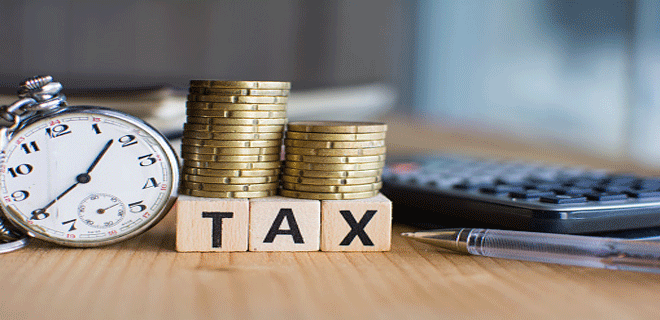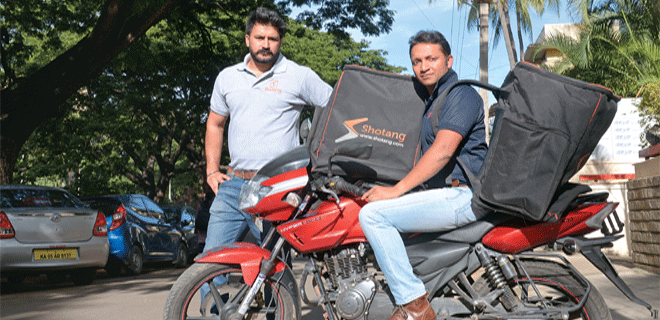E-mode to verify tax returns
The facility will be available only to those who file returns online

For the taxpayers, the entire process of filing tax returns is not complete until their return is verified. Till assessment year 2014-15, one had to take a print-out of the Income Tax Return Verification (ITR-V) copy, sign it and send to the Centralised Processing Centre (CPC) in Bengaluru. In a move to ease out these taxpayer grievances, the Central Board of Direct Taxes (CBDT) has announced that assessees filing IT returns online will no longer have to send the paper acknowledgement by post as a new Aadhaar-based electronic verification code (EVC) has been launched for authentication.
The e-verification code (EVC) is a 10 digit alpha numeric code which is unique for each PAN and is generated for electronic verification of the person on the web portal. The EVC code can be generated through your net banking account, linking your Aadhaar card, using ATMs or even by registering your e-mail or mobile number on the income tax website.
To make it even simpler, in January it was announced that taxpayer can now e-verify using bank account or demat account details as well. Says Kuldip Kumar, Leader, Personal Tax, PwC: “Verifying your return by a simple click is always more convenient and time effective. Given the tech-savvy world we live in, this is a welcome step aimed to simplify the process and ensure a paperless filing.”
Not just that, the CBDT, in case of returns for the assessment years 2009-10 to 2014-15, which were uploaded electronically by taxpayers, there is an option to e-verify such pending returns through EVC. This process is expected to be completed by August 31, 2016. This will regularise the pending returns filed in earlier years but not yet verified by the tax payers.
Ways for e-verification
E-verification of return can be done at the time or after uploading the return on the web portal. The EVC can be generated through either of following methods.
1. Net Banking: Various banks have registered with the I-T department for e-filing, providing direct access to the e-filing website. For that, the taxpayer needs to check whether his bank is authorised by the income tax department for providing direct access to the government’s e-filing website. Also, the banks will be providing this service to the account holders whose bank accounts have a validated PAN as part of KYC (know your client). The taxpayers can use this facility through their existing internet banking user ID, login password and transaction password.
2. Aadhaar number: In order to use the Aadhaar OTP (one-time password) method, the taxpayer is required to provide his Aadhaar number for linking with the PAN on the income tax portal at incometaxindiaefiling. gov.in. Once the linking is done, e-verification using Aadhaar number can be done and a OTP shall be generated which once submitted on the portal completes the verification process. The OTP is sent to taxpayer’s registered mobile number.
3. ATM: For the taxpayers who are unable to login through net banking for some reason, they can generate an EVC through an ATM, if the bank has been specified for this purpose by the tax department. A debit or credit card holder can use this option for generating an EVC. Upon selecting this option on the ATM screen, the bank will send a request to the tax portal that will generate the EVC and send it to the taxpayer’s mobile number.
4. Registered e-mail ID and mobile number: Taxpayers can use the tax portal to generate the EVC through this option wherein it will be sent to the registered e-mail ID and mobile number of the taxpayer. This option is available only to individuals whose total income is `5 lakh or less and there is no refund claim.
5. Bank account and Demat account: To generate an EVC using a bank account, the assessee will have to provide bank account number, IFSC code, e-mail ID, and mobile number and these details will be validated against the taxpayer’s details registered with the bank. The list of banks which will participate in this facility would be provided on the e-filing website.
To generate an EVC using the demat account, the assessee needs to provide details such as demat account number, e-mail address and mobile number. These details, along with PAN would be validated against the information with the depository (CDSL/NSDL). The e-filing portal will send the generated EVC to assessee’s e-mail address and/or mobile phone number as verified by CDSL or NSDL.
Practically, options under net banking, Aadhaar, e-mail ID/mobile number are presently available on the website. The other options of bank account, ATM, demat account are not yet operational. As per information appearing on the income e-filing website, in relation to the option of using a bank account, Punjab National Bank is the first bank to launch this facility which will facilitate its customers who may not have a net-banking account to e-verify their return. Other banks are also expected to offer this facility soon.
olmdesk@outlookindia.com









